|
Autumn has truly arrived in this part of the world. No more summer dresses or breakfast on the balcony. Alas, the rainy weather is perfect for a little stitching. Or, for coming with me on a virtual trip. Pour yourself a cup of tea, raid the biscuit tin and enjoy! Since a couple of months, Mindelheim boosts a textile museum housed in the spectacular building of the Jesuit College. Being such a new museum, the whole collection is excellently lit by LED-technology. Not only can you actually see the individual stitches, you can even take decent pictures. And that's exactly what I did as the museum is so new, they don't sell a catalogue. The textile museum starts with a nice timeline display of fashion. Then there is a room with fashion accessories like fans, bags and gloves. Many of which sport some form of embroidery. Past the fashion displays, you land in a set of small rooms filled with different types of embroidery and (needle)lace. The museum collection is tilted heavily in the direction of whitework and lace. Not a bad thing at all, just something to keep in mind. Another display has a number of exquisite samplers. And then there is a nice little display filled with silk embroidery and goldwork. Especially the samplers and the unfinished work is really practical if you want to study this particular technique. Intersperced between the displays, are single works of embroidery. Some of really high quality, others more of the leisurely type. There are also a number of Chinese embroideries on display. After the embroidery displays, you'll enter the lace rooms. There are fantastic (and huge!) examples of needlelace. They even have a large cupboard with drawers where smaller items are stored. Pulling out the different drawers is very rewarding. So many excellent pieces. And some of the pieces even have a royal connection!
If you are ever in the area, do visit this gem of a museum. You can even bring your menfolk as the archaeology museum and the art museum are housed in the same building. Still afraid that they might bore themselves? Store them at one of the many cake shops lining the streets of this medieval town!
14 Comments
On Friday I had my second, and unfortunately last, lesson in Silesian whitework with Elisabeth Bräuer at ArtTextil, Dachau. As I had prepared all the surface stitching on my sampler, I could now fill the holes with needle lace using cotton crochet thread #80. I am used to work my needle lace quite dense. However, Hirschberg needle lace is worked very open. My first attempts were clearly too dense, then invitably some became too open until I finally arrived at something in the middle. As our stitching afternoon with Mrs Bräuer wasn't long enough to try out all the different types of needle lace, I struggled quite a bit with the drawings and discriptions she had given us (see previous post for a link to a PDF on Mrs. Bräuer's website). Some parts came out four times and even the fifth final version isn't quite right. So, I really hope Mrs. Bräuer will hold another course in the future! This is what my finished sampler on Bielefelder Kettgarnleinen looks like: Let's explore the history of the Hirschberg needle lace a bit. This particular type of needlelace started to emerge around 1856 in the Hirschberg valley. Due to the continental system under Napoleon (1805-1813), the linen weavers in this area prospered as the British competition fell away. However, when trade functioned normal again, British linen had become much cheaper due to the fact that the process had been mechanised as a result of the Industrial Revolution. To provide the linen weavers with a different source of income, lace schools were opened where girls would be taught Venetian needle lace. One of these schools was established by Fürstin Daisy von Pleß. She was born in 1873 at Ruthin Castle in Wales. She married Fürst Hans Heinrich the 15th of Pleß, wealthiest heir in the German Empire, in 1891. Although at first she didn't really like the primitive life in Germany, she became very popular with the local people. She instigated many projects to help women, children and the disabled. She was at the center of high society before the Great War and her extravagant lifestyle and family scandals were all over the tabloids. She was well aquinted with Kaiser Wilhelm II, King Edward VII and the Queen of Rumania.
Sadly, it all didn't last. Due to the war, she had to leave her new home in Silesia. And although she was met with a lot of dispise due to the fact of her British nationality, she worked as a nurse and took care of wounded soldiers. After the war, she divorced her husband. As a result of chronic medical conditions and social isolation, she died lonely and poor in 1943 in Waldenburg (now Poland). Last Friday, I attended a course on Silesian whitework by Elisabeth Bräuer at ArtTextil in Dachau. This particular form of whitework was practiced by the German population of Silesia, which after the second World War became part of Poland. Those Germans that had not fled for the Russian army, were expelled by the new rulers and fled into Germany. They brought with them their cultural heritage and folk costumes. The linen apron worn on feast days and for other special occasions was richly decorated with whitework and needlelace. On Friday, we started by practicing the surface stitches with cotton a broder (#16 - #30) on a scrap of linen. This particular form of whitework only uses buttonhole stitch, satin stitch, french knots, chain stitch and eyelets. As with for instance Richelieu, parts are cut out and the rim is strengthened with buttonhole stitch. The order of work is a little different though. You start by outlining the design line with a double row of closely worked running stitch. Then you make cuts in the middle and you turn the unwanted fabric flaps under. The edge is then fastened with not too closely worked buttonhole stitch. Any unwanted fabric bits still protruding on the back, are then cut off. The so formed holes are then filled with needlelace using crochet yarn #80. There are about 19 different forms of this needlelace. However, only five different patterns were ever used on one apron. I presume that using more would result in an unbalanced and unpleasing design. The needle lace consists of differently worked buttonhole stitches and is anchored in the previously worked buttonhole rim. The aim is to create a very open lace. This results in a striking contrast between the surface stitches done in a thick type of thread and the lace being worked very open in a thin type of thread. I must confess that I find this contrast not very esthetically pleasing. One of the things I had to come to terms with was the very different technical aspects of working the surface stitches. I am a stabber and I don't sew my embroidery stitches. And I am simply too old to change :). It always takes me a while to translate the demonstrated 'sewing' into 'stabbing'. Furthermore, I am used to outline with split stitch before I cover with satin stitch. Silesian women used running stitch. Since I wanted to learn this particular type of embroidery, I went with it. But it wasn't a success. My leaves aren't as crisp as they normally would be. Another technical improvement I would make, concerns the cutting of the fabric. I would outline with one row of closely worked running stitch, then cut and then secure the unruly flaps of fabric with my second row of running stitch. This prevents the fabric pieces from being caught up in the subsequent buttonhole stitching. This is how far I have come preparing for coming Friday which sees the second part of our course when we will learn to do the different Hirschberg lace patterns. I will tell you all about it in next week's blog post. Would you like to try your hand at this particular form of whitework? No problem. Elisabeth Bräuer has kindly published the instructions on her website. Do browse through the different articles, although they are all in German, they do have lovely pictures of embroidered Silesian folk costumes.
Last week, we examined the basis of Appenzell embroidery: padded satin stitch. This week, we'll have a closer look at other major components: Höhlen or drawn thread work, Lääteli or pulled thread work and Spetzlistiche or needle lace. This sampler, made by Martha Ackermann and part of Verena Schiegg's collection, mainly shows pulled thread work. First, the outer line of the design area (in this case squares) is worked in padded satin stitch. Next, threads are taken out from the back to open up the fabric. For instance, every fourth vertical and horizontal thread is cut and taken out. This 'canvas' is now filled with stitches with a thread as fine as the fabric threads. Here is a close up of some of the filling stitches. Today, only about twenty stitch patterns are still in use. However, the Appenzell Museum (well worth a visit!) has a sampler with 124 different patterns. Unfortunately, without taking it apart, it is impossible to tell how these were made. Some patterns are similar or equal to those used in Schwalm embroidery. You can find more on this whitework technique very suitable for beginners on Luzine Happel's blog. Do you see the ladder-like structures in the above monograms? These are called Lääteli and are a form of pulled thread work made with hem stitch. Finally, the creme de la creme of Appenzell embroidery is formed by the Spetzlistiche: very fine needle lace. See the filled roundels on the above cuff? That's the stuff. The outer line of the design element is worked in padded satin stitch. Then the fabric is cut away carefully. Buttonhole stitches are worked over the padded satin stitch to clean up the border. Now a piece of lace is formed by anchoring threads into the buttonhole stitches. Nowadays, Appenzell embroidery can still be seen on the festive folk costumes of the region. Collar or Schlottechrage and cuffs are elaborately embroidered.
That's all for now folks. Back to packing the last bits needed for the show in Osnabrück at the end of the week. Hope to meet many of you there! As promised in my last post, a few more deliciously stitched goodies from the National Museum in Munich. One of my favourite pieces is this golden dragon slip (Inv. Nr. T3792). The dragon looks really live like and three dimensional. This is achieved by couching the membrane gold (comparable to Japanese Thread) over clever padding. The darker underside of the dragon's belly and the shadow side of its tail and neck are worked in or nue with red silk. I particularly like his face with its detailed expression. This dragon was probably once stitched onto a banner or a cape. It was stitched around AD 1430 in southern Germany. The dragon is besieged by the Christian cross on its back. This symbol was part of the late medieval Order of the Dragon founded by Sigismund, Holy Roman Emperor. The noble knights were obliged to defend the cross and fight the infidels. Another adorable little piece consists of an Agnus Dei capsule stitched around AD 1450-1470 in southern Germany. These capsules were made to preserve a piece of the burned down Easter candle. This particular capsule shows the Lamb of God on one side and the head of Christ on the other. The body of the lamb is covered in freshwater pearls. Red velvet covered with spangles is used as a sparkling background. Unfortunately, the museum does not have a picture of the other side of the capsule on display. And last but not least, a huge piece of fantastic surface embroidery (Inv. Nr. T1742). The piece probably once adored the altar. Stitched around AD 1500 in Swabia, Germany with linen yarn on linen. The cloth shows the popular imagery of a unicorn hunt in a secluded garden. Remarkable about the piece are the many different filling patterns in needle lace technique. The figures are outlined in a dark chain stitch and then some areas are filled with intricate patterns of needle lace. Other areas are filled with what seems satin stitch, couching and cretan stitch. Truly a piece I could study for hours!
|
Want to keep up with my embroidery adventures? Sign up for my weekly Newsletter to get notified of new blogs, courses and workshops!
Liked my blog? Please consider making a donation or becoming a Patron so that I can keep up the good work and my blog ad-free!
Categories
All
Archives
July 2024
|
Contact: info(at)jessicagrimm.com
Copyright Dr Jessica M. Grimm - Mandlweg 3, 82488 Ettal, Deutschland - +49(0)8822 2782219 (Monday, Tuesday, Friday & Saturday 9.00-17.00 CET)
Impressum - Legal Notice - Datenschutzerklärung - Privacy Policy - Webshop ABG - Widerrufsrecht - Disclaimer
Copyright Dr Jessica M. Grimm - Mandlweg 3, 82488 Ettal, Deutschland - +49(0)8822 2782219 (Monday, Tuesday, Friday & Saturday 9.00-17.00 CET)
Impressum - Legal Notice - Datenschutzerklärung - Privacy Policy - Webshop ABG - Widerrufsrecht - Disclaimer

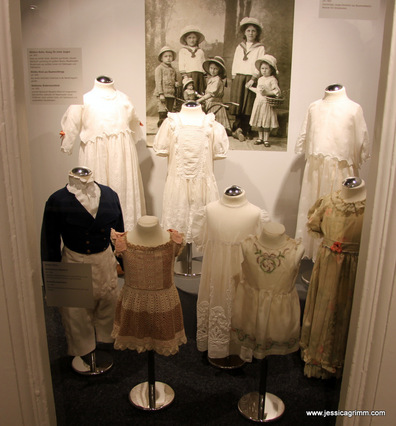
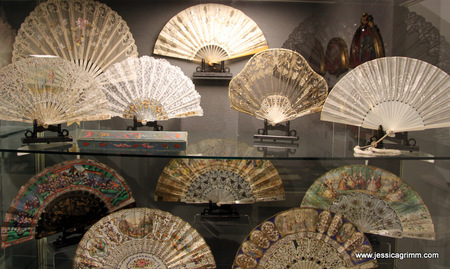
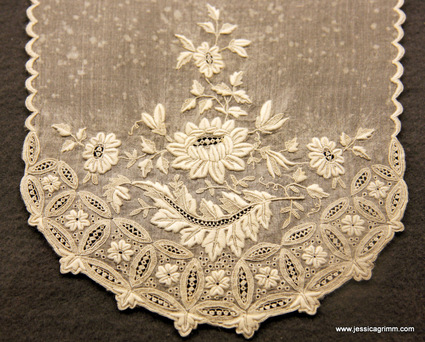
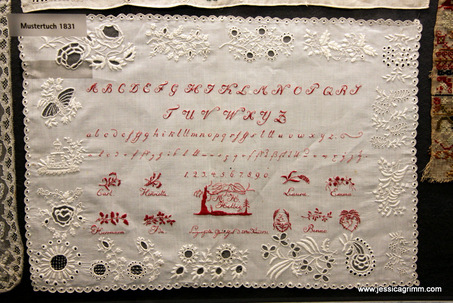
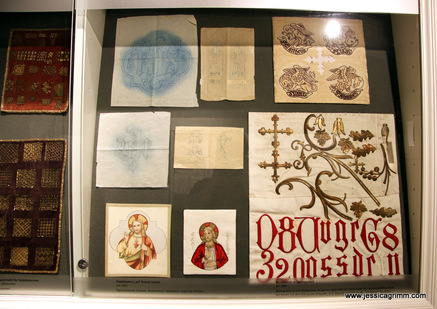
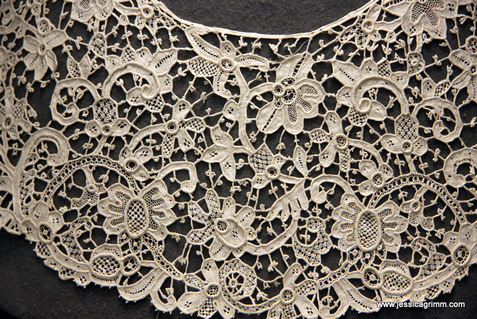
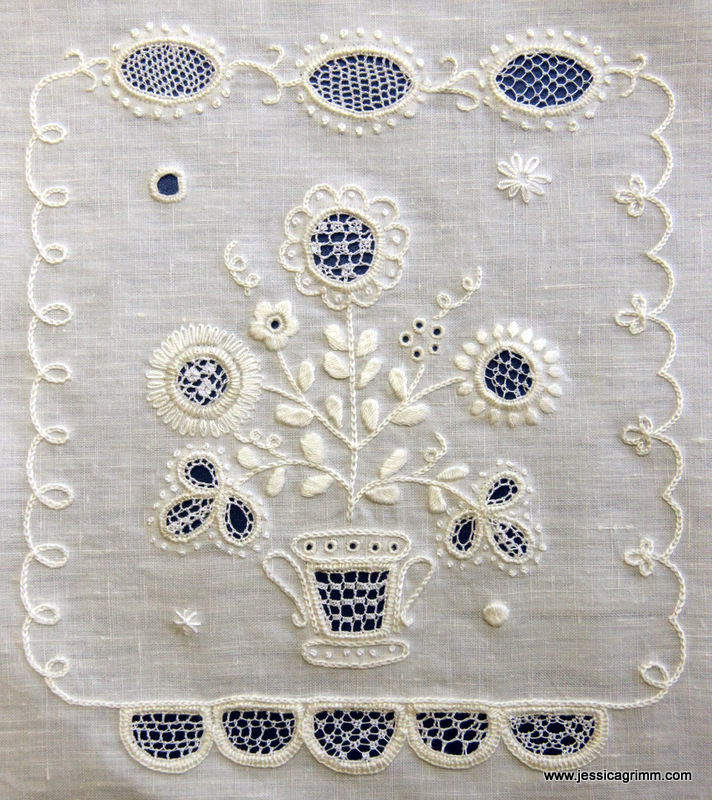
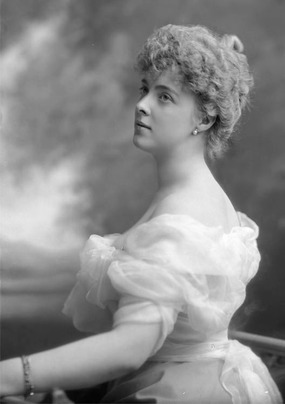
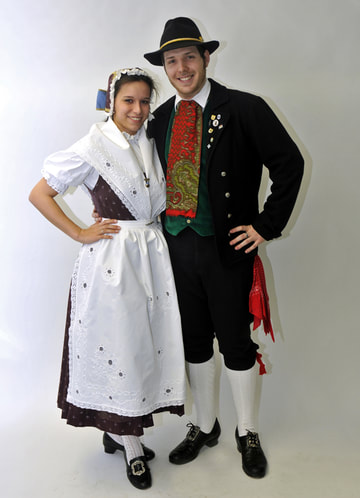
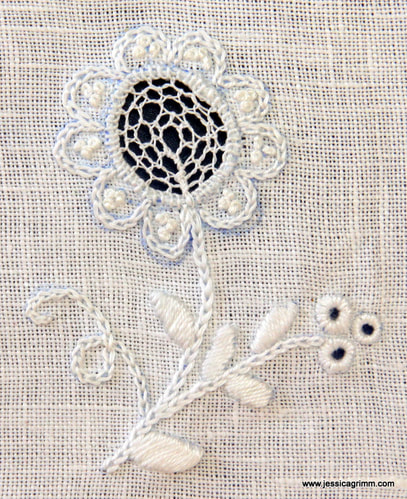
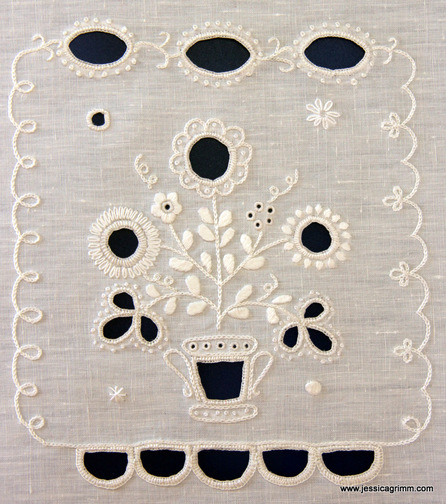
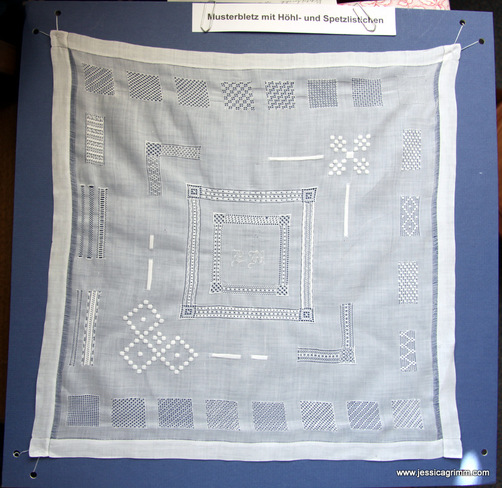
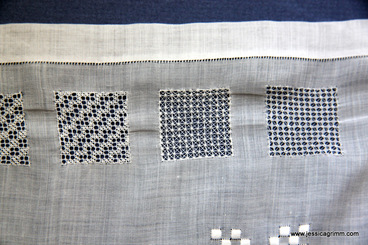
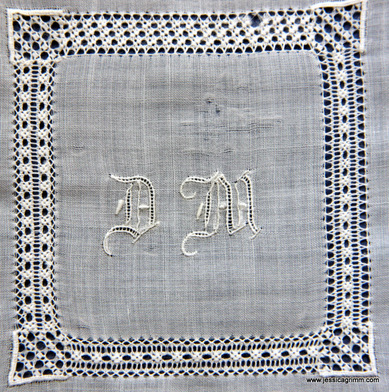
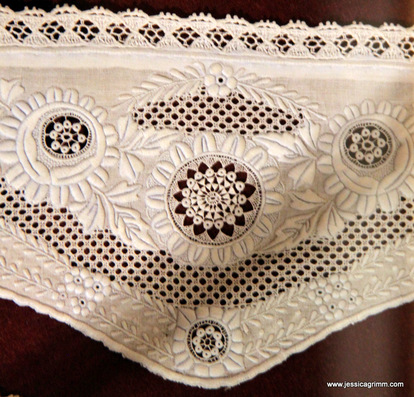
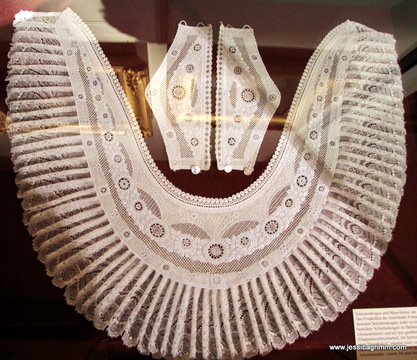
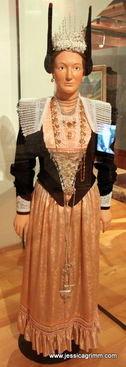
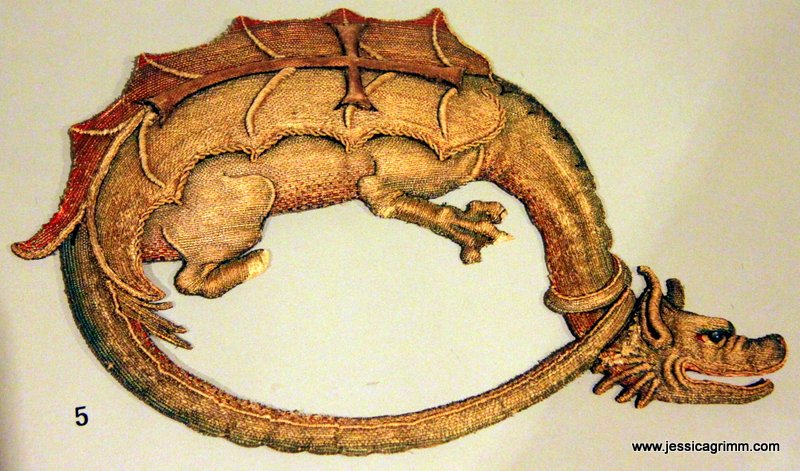
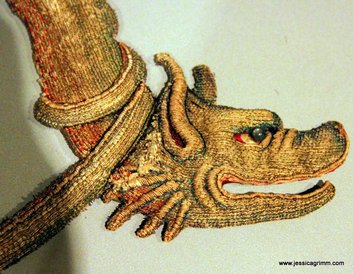
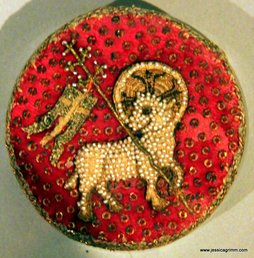
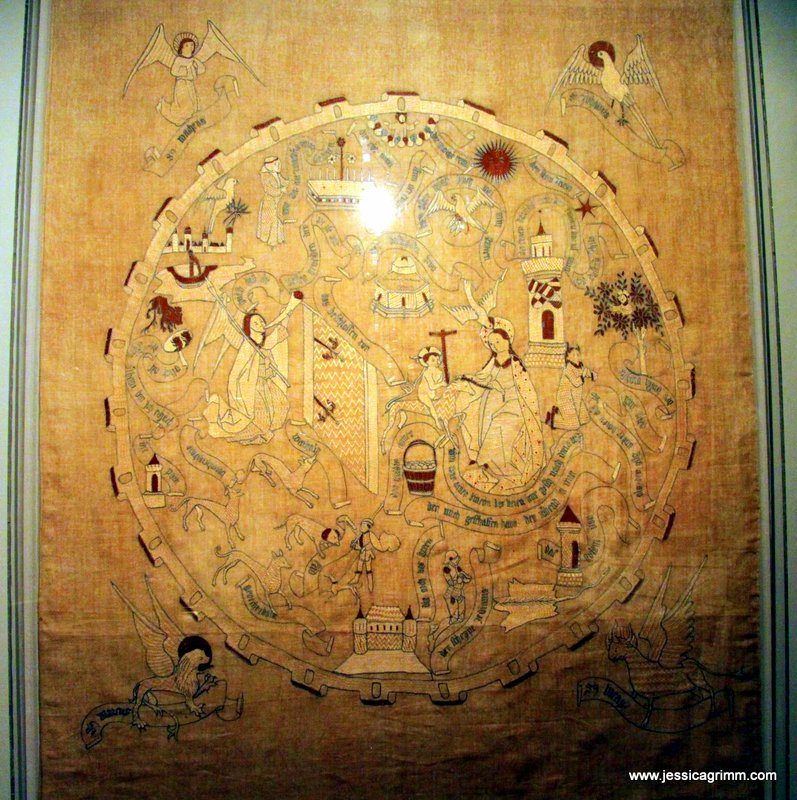
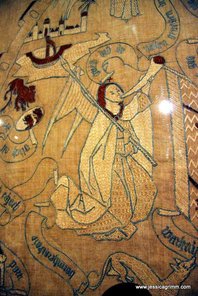
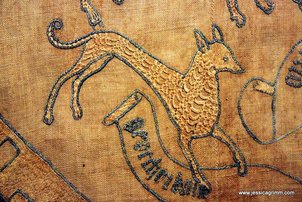





 RSS Feed
RSS Feed